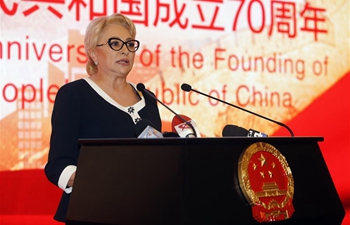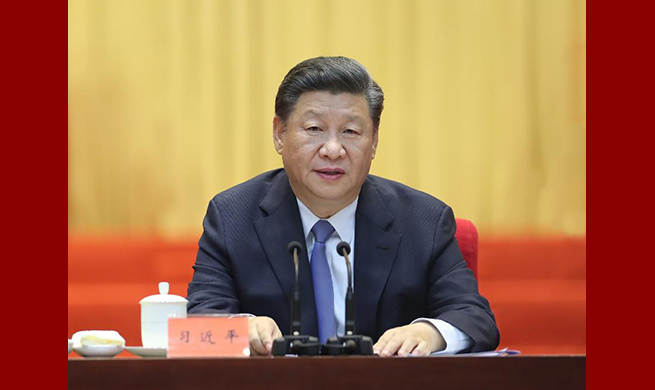BEIJING, Sept. 20 (Xinhua) -- The Yellow River, China's second-longest river, is expected to play a more important role in the country's development with new efforts in environmental protection and high-quality development in the river basin. Here is some information regarding the legend of the river as well as its history and geography.
The 5,464-km-long waterway feeds about 12 percent of China's population, irrigates about 15 percent of arable land, supports 14 percent of national GDP and supplies water to more than 60 cities.
Originating in Qinghai Province, the Yellow River, known as China's "Mother River" and the cradle of Chinese civilization, runs through nine provinces and autonomous regions including Shaanxi and Henan before emptying into the Bohai Sea in eastern China's Shandong Province.
The river got its name Huanghe in Chinese because of its yellow, muddy water, which appears as it runs through the Loess Plateau in northwest China.
Primitive humans, including fossils of Homo Erectus discovered in Lantian County, Shaanxi Province, were found to live in the Yellow River basin more than 1.1 million years ago, which boasts a large number of ancient cultural sites.
The Yellow Emperor, considered one of the common ancestors for all Chinese, was born in the city of Xinzheng, Henan Province more than 4,000 years ago. The Yellow Emperor and Yan Emperor are two legendary ancestors of the Chinese nation.
For over 3,000 years, some major dynasties in Chinese history built their capitals in the river basin, making the region the center of politics, economy and culture in the country.
The Yellow River also witnessed the birth of the four era-defining inventions in ancient China -- printing techniques, papermaking, gunpowder and the compass, which all emerged in the drainage basin.
Ironworks discovered in the region show the technology of softening castiron in China came 2,000 years earlier than similar technologies invented in Europe.
"The drainage area of the Yellow River lays the foundation for the 5,000-year-old Chinese civilization. The culture and civilization of the river are the roots of the Chinese nation," said Liu Qingzhu, an expert from the Chinese Academy of Social Sciences.
In Chinese mythology, Da Yu, an ancient hero, tamed the great flood in the river's basin, which reflects the significance of flood control in the region in Chinese history.
Over the past 2,500 years, the Yellow River has broken its dikes 1,600 times and has made 26 major changes in its course in its lower reaches.
To harness the silted river, the Communist Party of China set up the Yellow River water conservancy committee in 1946 in the liberated areas. Flood control in the region has made significant improvement after the founding of the People's Republic of China in 1949.
Dams were built to generate power and control flood and silt. Large afforestation projects were carried out to reduce soil erosion of the Loess Plateau.
Due to increasing water demand along with economic development, the Yellow River, which accounts for 2 percent of the country's river runoff, experienced cutoffs from 1972 to 1999.
Since August 1999, the river has been flowing without cutoff for 20 consecutive years thanks to the unified allocation of water resources, according to the Yellow River Conservancy Commission under the Ministry of Water Resources.
As an "ecological corridor," the Yellow River, linking the Qinghai-Tibet Plateau, the Loess Plateau and plains in northern China with severe water scarcity, plays an important role in improving the ecological environment, combating desertification and providing water supply with the help of water conservancy projects.
In the new era, the Yellow River basin constitutes an important ecological shelter zone, economic belt and important region for winning the battle against poverty. It plays an important role in China's economic and social development and ecological security.
The country has built more than 400 wetland nature reserves and national parks in the river basin.
Over the past 70 years, China has carried out four large-scale embankment construction projects and built water conservancy projects such as Longyang Gorge, Liujia Gorge hydropower projects and the Xiaolangdi Dam, achieving a major breakthrough from passive treatment to active management of sand and water in the Yellow River.
Since 2012, the country implemented two phases of flood control projects in the lower reaches of the waterway and completed the standard levee construction. The accumulated amount of silt and sand into the Yellow River has been reduced by nearly 30 billion tonnes, and the sediment of the downstream river has been reduced by 11.2 billion tonnes.
In recent years, China has also made intensive efforts to restore the ecology in areas such as the Qilian and the Qinling mountains in the Yellow River basin.

















